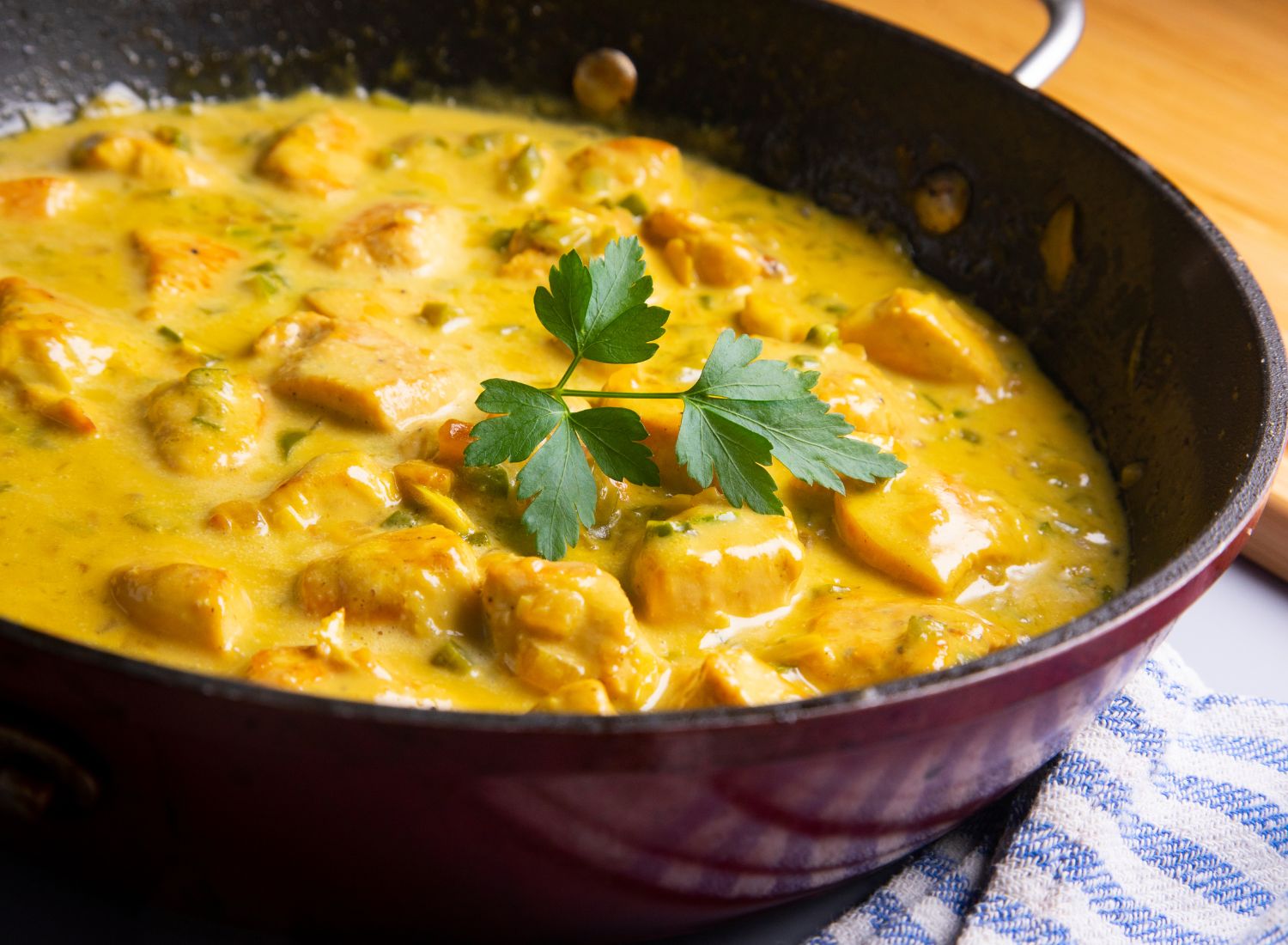So, you’re cooking up a curry, and suddenly, no coconut milk. Don’t worry; you may already have a good coconut milk substitute for curry in your kitchen that can do the trick just as well. Coconut milk usually brings that creamy touch to your curry, right? Well, turns out there are a bunch of other ingredients you can use to get a similar result.
Alright, let’s go find a good coconut milk substitute for a curry.
Getting Started: Why is Coconut Milk Important in Curry?
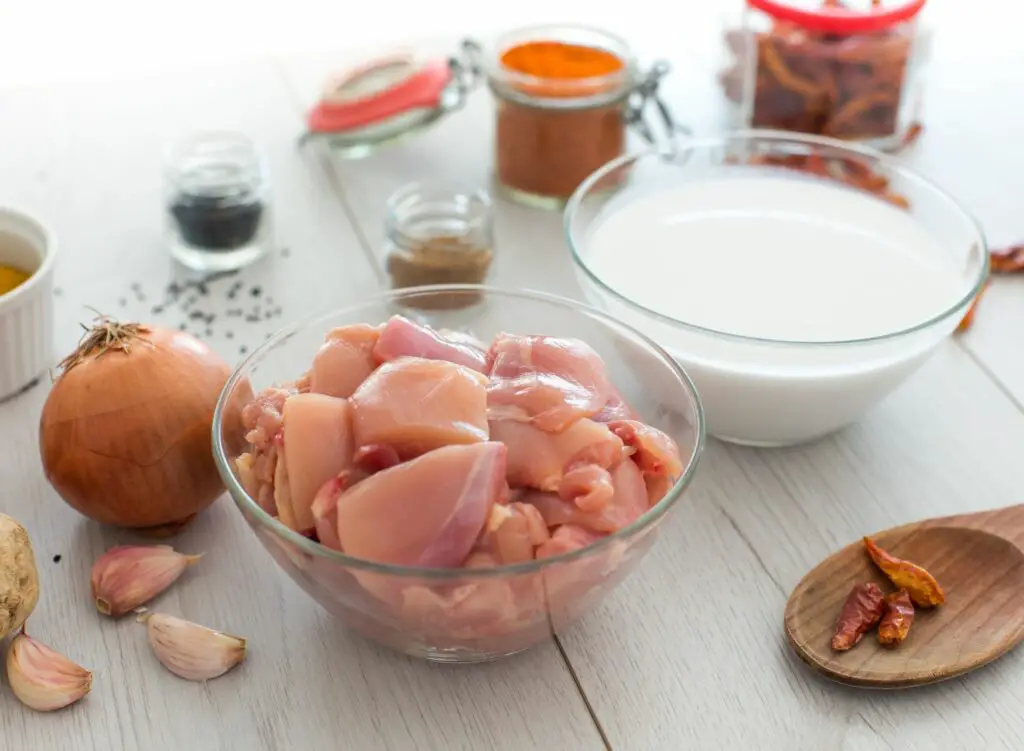
Before you substitute coconut milk with something else in your curry, let’s talk about why it’s usually included. Knowing what coconut milk does in the curry will help you choose the best replacement.
Basically, coconut milk affects four aspects of curry preparation: flavor, texture, moisture, and dietary properties.
Coconut milk has a special taste that’s easy to pick out but not too strong. It’s like a friendly background flavor. It’s not spicy, so it helps calm down the hot spices while also making them taste even better.
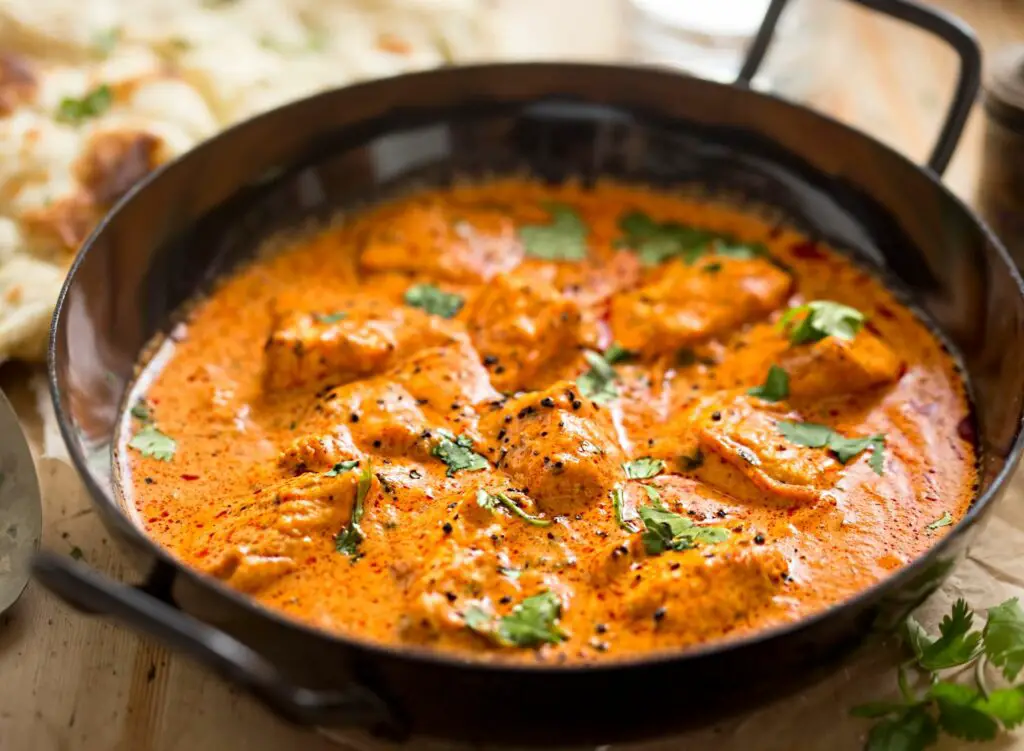
When you talk about how the curry feels in your mouth, coconut milk makes it thick but not heavy. It’s creamy and smooth. Because of this, coconut milk also helps keep the curry from getting dry, and it does a better job than just adding water because it doesn’t water down the taste.
Lastly, coconut milk is great for people who don’t eat dairy products, maybe because they’re lactose intolerant. So, for some, finding a replacement is more about their diet than just taste and texture.
Depending on what’s most important to you, the perfect coconut milk substitute will check one or more of these boxes, making sure your curry still tastes amazing.
01. Coconut Cream
Provides Similar: Flavor, Texture, and Dietary Properties.
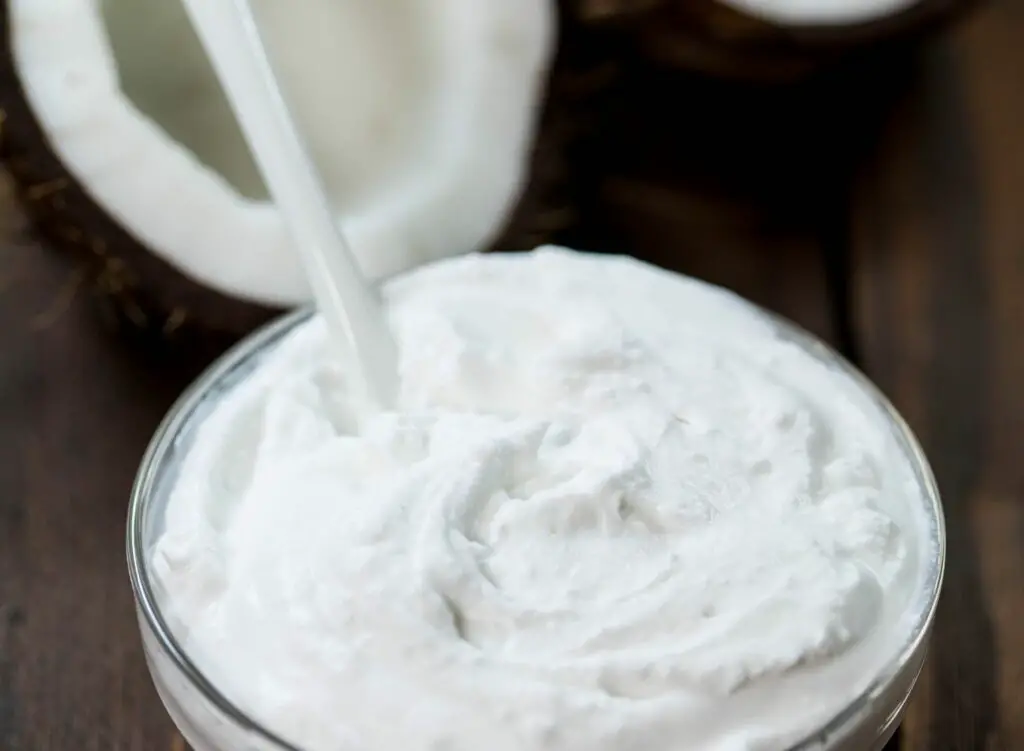
If coconut milk is nowhere to be found in stores, keep an eye out for coconut cream as a substitute. Personally, I do prefer coconut cream in curries; it’s almost like coconut milk’s twin but with some extra creaminess.
It is the perfect replacement for coconut milk in your curry since it boasts the same taste but with a richer, velvety feel.
However, coconut cream is like a flavor superhero – a small amount packs a punch. So, you’ll want to use it wisely. If it’s too thick for your liking, don’t worry – you can thin it down. Just add a splash of water or any liquid until it’s more like coconut milk.
If you want it to be an identical replacement, two tablespoons of coconut cream mixed with ¾ cup of water will equal one cup of coconut milk.
02. Heavy Cream
Provides Similar: Texture, Moisture.

Heavy cream is the to-go option for most people since you probably have some in your kitchen already.
Additionally, its rich texture makes it an indispensable thickening agent in an array of curry recipes and a plethora of Indian dishes, and it goes well with garam masala spice blend.
Adding heavy cream to curry thickens the texture while adding a fair share of moisture. Naturally, it tastes nothing like coconut milk, but the flavor it provides is delicious in its own right.
Its downside? Heavy cream is a dairy product, so it may not be the preferred option for anyone with lactose intolerance.
You can replace coconut milk with heavy cream on a 1:1 ratio, but the curry will be thicker. To reach a consistency similar to coconut milk, mix two parts of heavy cream with one of water. For an extra flavor punch, you can use coconut water instead.
Read Also: Which Food Is Spicier, Mexican Or Indian? (4 Most Hottest Dishes!)
03. Almond Milk
Provides Similar: Dietary Properties, Texture (with a caveat), Moisture.
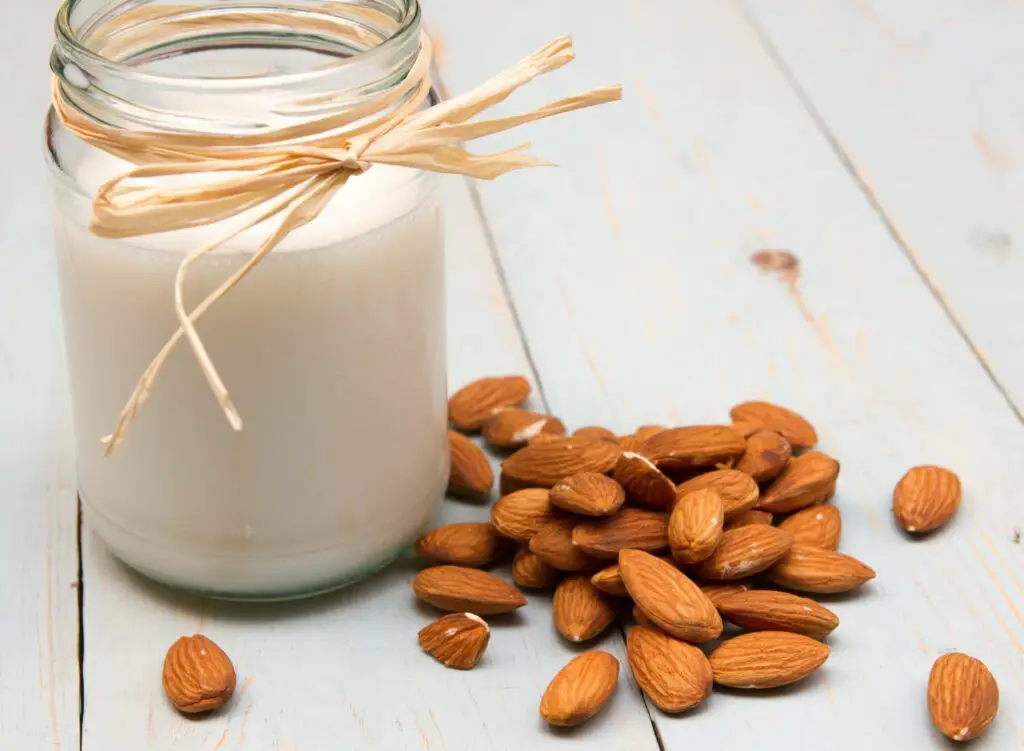
Like coconut milk, almond milk is lactose-free, vegan, and vegetarian, making it a solid choice for those navigating dietary limitations. Its texture is more substantial than water, offering your curry the requisite creaminess.
That being said, almond milk doesn’t exactly mirror coconut milk in terms of thickness or flavor. You may need to fine-tune its consistency a bit to get the desired creaminess. A splash of coconut oil could also help achieve a hint of that coconut essence.
When cooking your curry, swap coconut milk with almond milk at a 1:1 ratio. To achieve a thicker texture, incorporate a teaspoon of cornstarch, adjusting until it matches your preference.
04. Greek Yogurt
Provides Similar: Texture, Moisture.
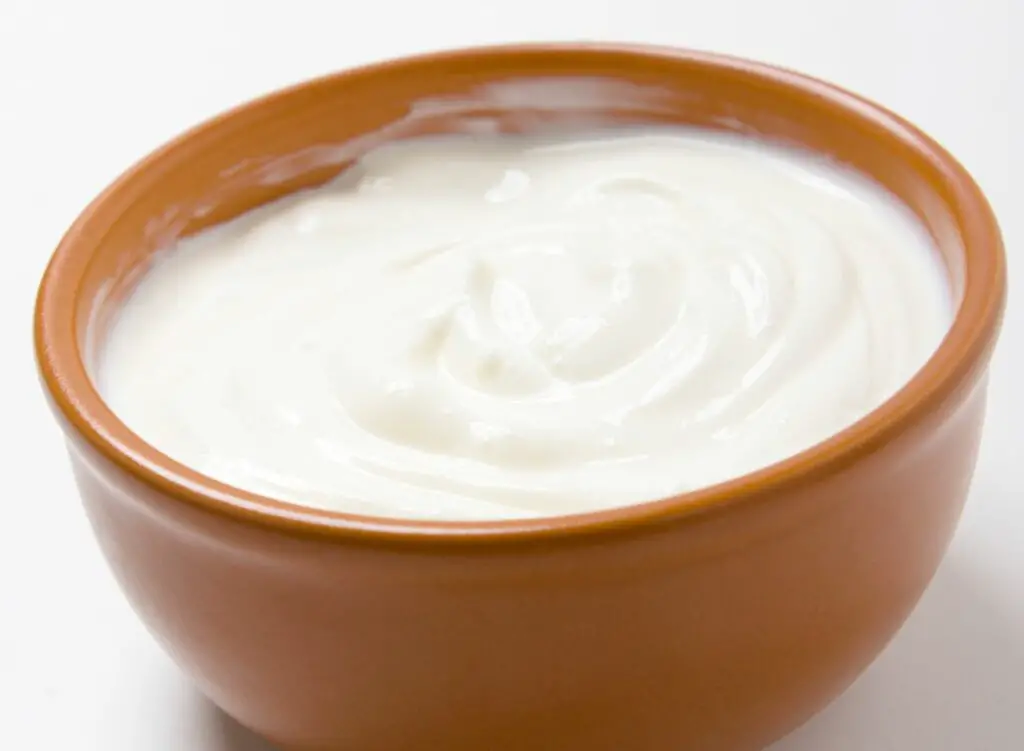
Another creative and healthy alternative, Greek yogurt, thickens curry sauce and gives it that creamy texture, but you can easily dilute it if you find it too rich for your tastes.
The main setback of Greek yogurt is that it tastes nothing like coconut milk. Instead, it has a sour taste that might not be what you expect. However, this tanginess is perfect for spicy and seasoned curry and goes well with ginger, garlic, peppers, and other curry spices as long as you don’t overuse it.
The replacement ratio is 1:1, but you can dilute Greek yogurt with water as you see fit. Just make sure to incorporate it slowly to prevent separation.
05. Cashew Cream
Provides Similar: Texture, Moisture, and Dietary Properties.
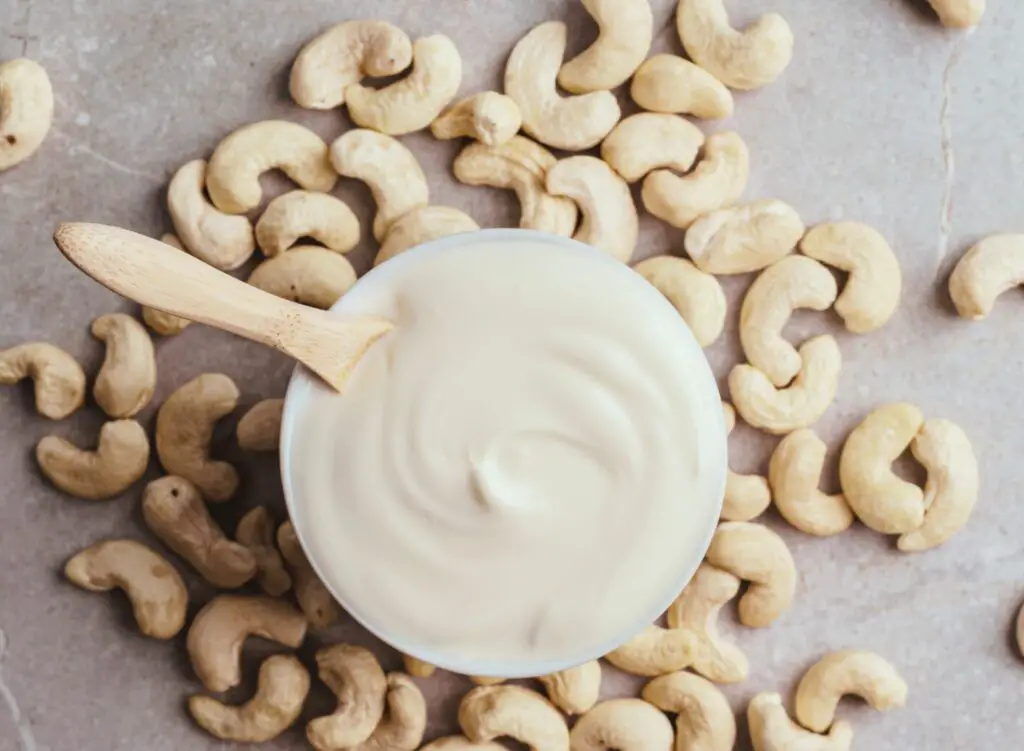
Cashew cream is smooth, thick, and spreadable—a near-perfect substitute for coconut milk or cream in your curry. Although the flavor doesn’t resemble coconut, its nutty and earthy undertones enhance the mouthfeel of any spice-heavy curry.
Likewise, cashew cream is vegan, vegetarian, lactose-free, and—unless you are allergic to nuts—an excellent and healthy choice. It is also the perfect keto addition.
Whipping up cashew cream in your own kitchen is a breeze. Start by giving cashews a good soak overnight, ensuring they are tender and ready to be transformed. The next day, combine them with your choice of milk, a milk alternative, or water in a blender. Blitz until velvety smooth, and voila! You’ve got homemade cashew cream that’s perfect for adding a rich, nutty touch to your dishes.
The substitution ratio is 1:1.
06. Powdered Milk
Provides Similar: Texture, Moisture.
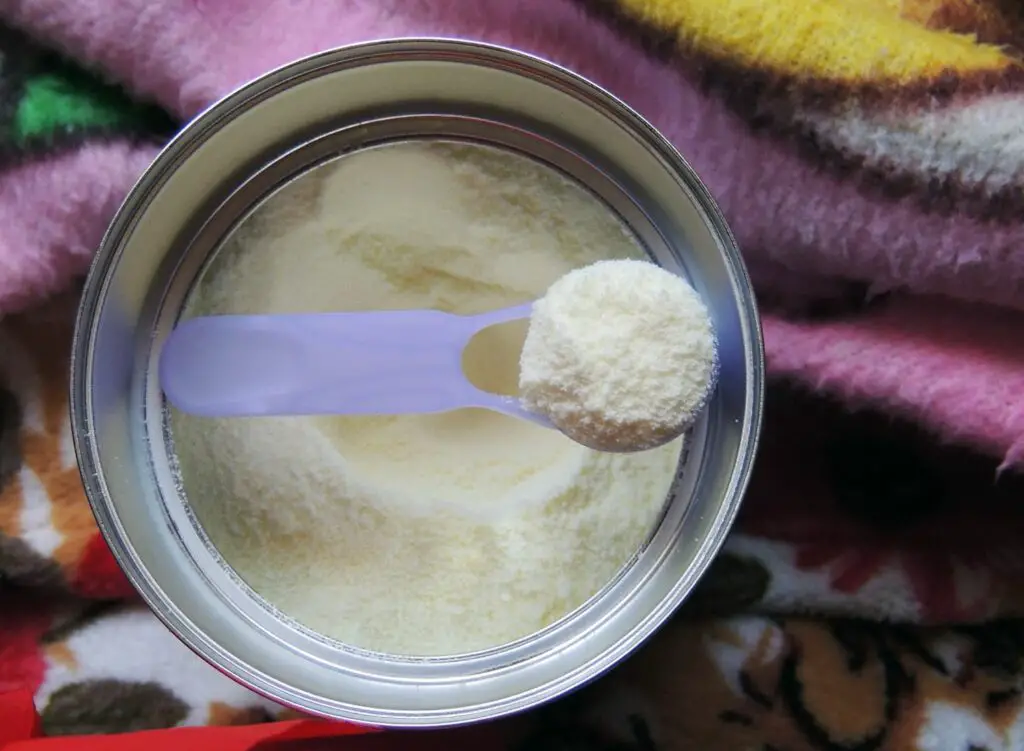
Powdered milk steps up as a viable alternative to coconut milk in curry due to its capacity to mimic the creaminess that coconut milk is cherished for. While it doesn’t bring the coconut’s signature taste to the party, it still triumphs in laying down a luscious and fulfilling base for the curry.
One of the perks of opting for powdered milk is the liberty it gives you in steering the consistency of your curry since you’re in the driver’s seat regarding how much water gets mixed in.
If your taste buds yearn for that coconut essence, here’s a nifty hack: infuse the powdered milk concoction with a smidge of coconut extract.
This dynamic duo blesses your curry with both creamy finesse and a whisper of coconut flavor, culminating in a delectable and wholesome dish.
Just remember that water is the key element here—do not try to add powdered milk as it is since you need to dissolve it beforehand. Otherwise, you risk a clumpy curry sauce.
You can also try these 9 best lactose-free milk powders (Dairy and plant-based).
07. Oat Milk
Provides Similar: Texture (with a caveat), Moisture, Dietary Properties.

Oat milk is accessible—easy to find and easy to make at home. Likewise, it doesn’t split or curdle, so you can add it to your curry without worrying about tempering or mixing.
It is also a vegan, vegetarian, lactose-free, and allergen-friendly option for people with dietary restrictions, not to mention it has a neutral, slightly nutty flavor that matches curry well.
Keep in mind that oat milk is runnier than coconut milk. While you can use a substitution ratio of 1:1, you may have to add a teaspoon of cornstarch or more if you want to thicken it. You may also add some coconut oil to enhance flavor.
08. Sour Cream
Provides Similar: Texture.
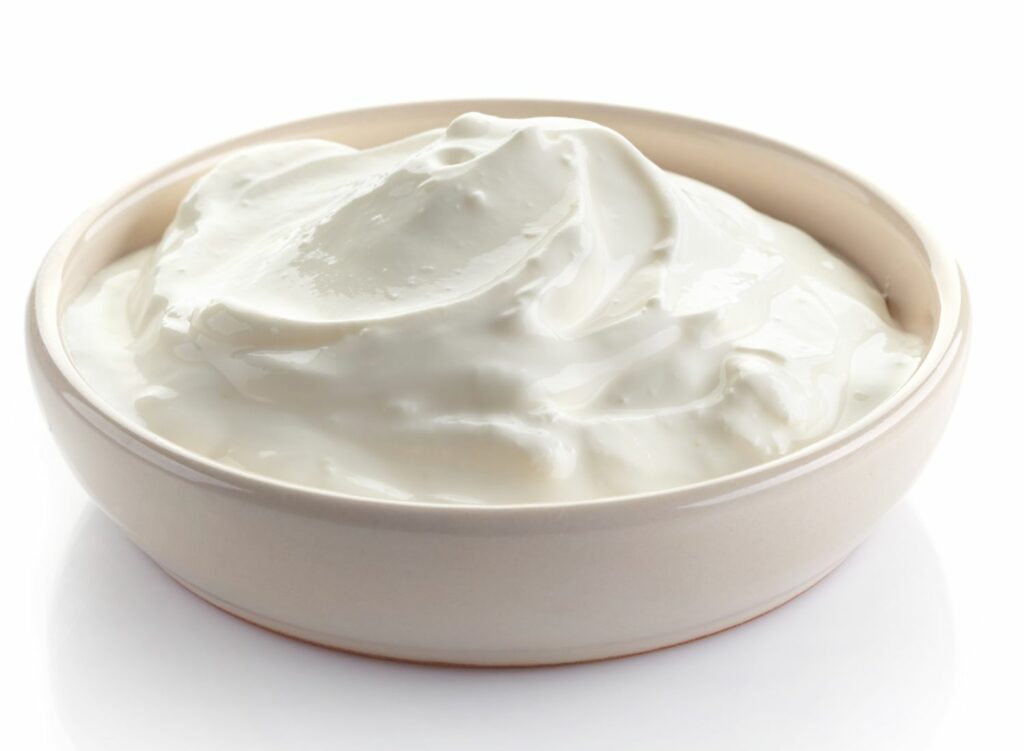
As a coconut milk replacement in curry, sour cream is somewhat similar to yogurt—it has a thicker consistency and adds a touch of sourness that counterbalances spices for a more balanced flavor profile.
However, you need to be extra mindful—not only does sour cream split easily, but it also has a much stronger flavor than yogurt. Adding smaller amounts is the wisest choice, as is reducing other acidic ingredients in your curry.
Ideally, you should start with a 1:2 ratio, using half of whatever coconut milk quantity you usually add. To be extra safe, you can dilute sour cream with water.
Top Tip: How to Make Curry Sauce Thicker?
To achieve a thicker curry sauce, begin by allowing the curry to simmer without a lid on low heat so the surplus liquid evaporates and the sauce naturally concentrates.
If you’re looking for a quick fix, make a slurry by mixing cornstarch, tapioca starch, or arrowroot with cold water or some liquid from the curry. Add this slurry towards the end of cooking, and watch the magic happen as the sauce thickens the moment it starts to boil again.
Blending a portion of the ingredients in a blender or food processor and stirring them back into the pot is another trick. Take it slow and steady with the adjustments to keep the thickness just right.
The Best Coconut Milk Substitute For Curry Depends On Your Recipe
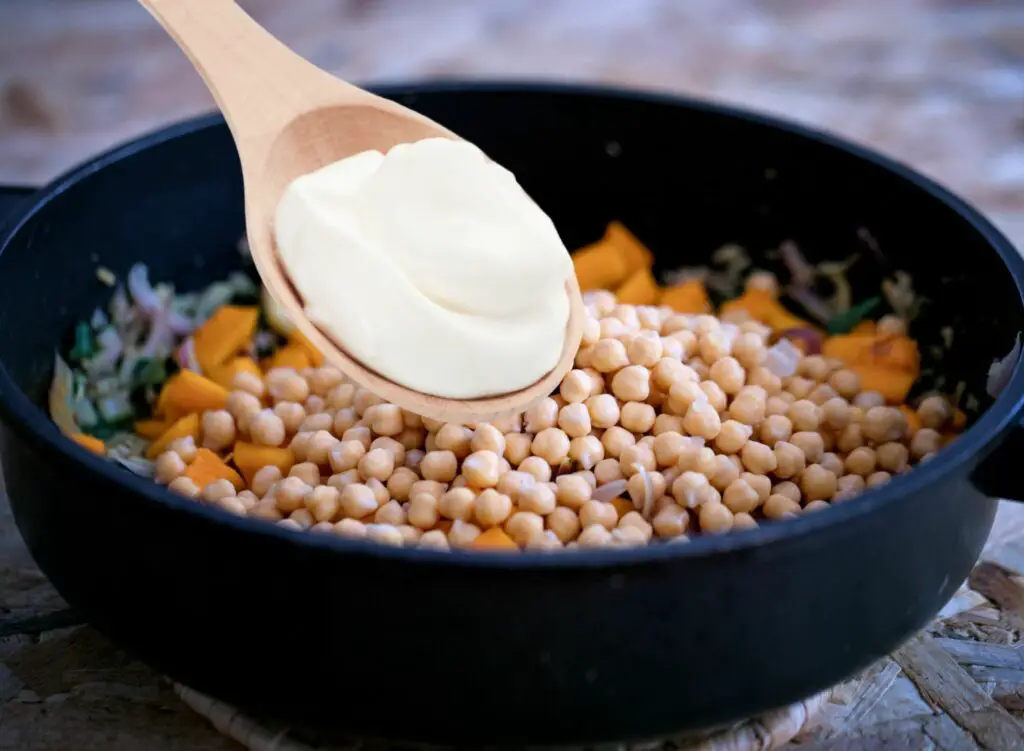
Though none of the alternatives can clone the essence of coconut milk (coconut cream comes close), I can vouch that they’re all capable of making your curry shine.
As for which one takes the crown as the best coconut milk substitute for curry, it hinges on what you hold dear in a curry. Rest assured, armed with the right measurements and culinary finesse, your curry will steal the spotlight, regardless of the absence of coconut milk.
If I had to choose one personally, I would go for coconut cream. The reason I would pick coconut cream is because it’s the closest cousin to coconut milk – it’s like coconut milk but richer and thicker. What I love about using coconut cream is that it keeps that wonderful coconut flavor, which I find essential in giving the curry its characteristic tropical taste.
However, if coconut isn’t the star flavor you’re after or it is not available, I might lean towards almond milk or cashew cream. I find that they provide a lovely creamy texture without overshadowing other flavors. It’s also quite exciting to experiment and see how different ingredients can change and enhance a dish.
Ultimately, it’s all about what I’m aiming for with the dish and who I’m cooking for. But coconut cream would be my go-to choice for keeping that authentic coconut charm in the curry.
Read Also: Best Ethnic Foods To Try In 2023 – Exploring Beyond The Cheeseburger.
